The Top 20 Ethereum Tokens
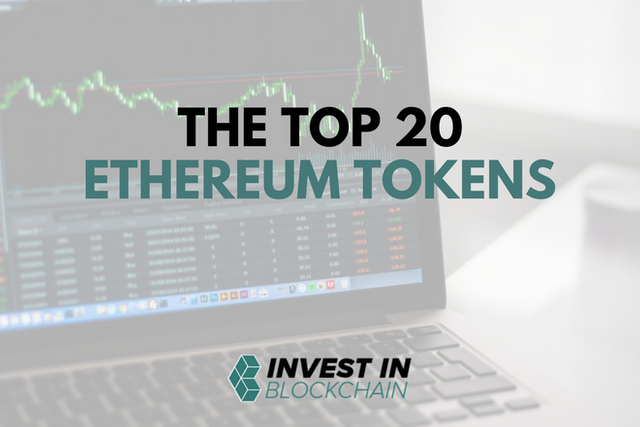
Among the cryptocurrency community, there is a large group who believe that Ethereum will one day have the largest market cap of all.
The belief is based partly on Ethereum’s long-term scaling solutions, which includes a transition from proof-of-work to proof-of-stake mining. That transition will result in Ethereum having a drastically lower environmental footprint compared to Bitcoin and other proof-of-work systems.
Ultimately, though, it is the ability to build applications on top of the Ethereum blockchain that makes it so promising. While Ethereum has been around for less than 4 years, some successful applications have already been developed on it. In fact, 46 of the top 100 cryptocurrencies by market cap are Ethereum-based tokens.
This article will talk about 20 of the most successful Ethereum-based tokens, ranked by their current market cap. Note that I will do my best to keep this list up-to-date and add information about coins that climb up the rankings, but the top 20 moves almost daily! Please refer to coinmarketcap.com/tokens for the current top 20 tokens and their prices.
Let’s get started!
1. EOS (EOS)
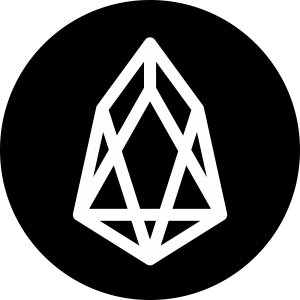
With a current market cap of nearly $6 billion, EOS is the biggest Ethereum-based token out there.
It’s important to clarify, however, that EOS has its own blockchain rather than using the Ethereum blockchain. This means that the Ethereum token is the only extent to which EOS is Ethereum-based.
EOS does still have a lot in common with Ethereum. Both are primarily smart contract–enabled platforms for hosting decentralized applications (dapps). The big technological difference that makes EOS unique is its operating system-like structure that scales both horizontally and vertically.
Horizontal scaling is the key phrase here, as it allows for smart contracts and transactions to be executed in parallel rather than sequentially. This difference makes EOS more efficient than Ethereum, leading to faster transactions and lower fees for dapps.
Some people have gone so far as to dub EOS a potential “Ethereum Killer”. However, if you’re looking to invest in EOS, buyer beware. The project is not well-regarded by a significant portion of the crypto community, and some have even speculated that it’s a scam. On the other hand, if they successfully develop the technology as laid out in the whitepaper, EOS will become a legitimate challenger to Ethereum as the premium Turing complete blockchain.
You can learn more about EOS by reading their website and whitepaper.
2. Tron (TRX)
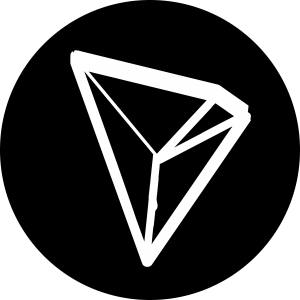
Tron is a blockchain-based protocol for revolutionizing the economics of online content. It aims to connect content creators with ordinary users using Tron’s coin, TRX, so that they are no longer reliant on centralized platforms to store and spread their content or to get paid for it.
The Tron whitepaper states: “Existing content platforms have been controlled by profit demands and centralized mechanisms, and the content we read is that which the centralized platform wishes us to read, rather than what we wish to read.” This rings especially true in China, where the first Tron-compatible entertainment app, Peiwo App, will be released.
Social media platforms today deploy algorithms designed to keep users on the platform for as long as possible in order to generate more revenue from advertisements. Such advertisement-based profit models are not optimal for end-users or content creators.
Tron’s decentralized ecosystem is designed to take control of the internet away from corporations like Facebook, Google, Apple, Alibaba and Tencent and redistribute it to content creators and ordinary users. Safe to say, it’s one of the more ambitious projects in crypto.
Tron is developed by a non-profit foundation based in Singapore. You can learn more about the project on their website, or by reading the whitepaper linked in the paragraph above.
3. VeChain Thor (VET and THOR)
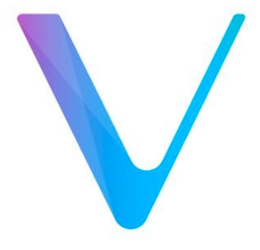
VeChain is a Blockchain-as-a-Service company that aims to provide trustless and transparent supply chain management to industries across the board.
Using smart chips that were designed and manufactured in-house, VeChain is able to track goods and ensure product quality and authenticity. This enables retailers to prove that the luxury items they are selling are legitimate, giving consumers peace of mind that they aren’t being scammed.
Furthermore, VeChain can make supply chain management significantly more efficient. Companies that once had multiple databases tracking manually entered information can transition to the VeChain blockchain so that goods can be tracked more quickly and easily with smart chips and data integrity can be ensured.
As of February 26, 2018, VeChain was re-branded as VeChain Thor, and the company expanded its technology to enable enterprise dapps solutions to be built on top of it. The re-branding includes a transition of the primary token from VEN to VET, as well as introduction of a new token called Thor Power (THOR). THOR is used to run smart contracts on dapps on the VeChain blockchain, and it was generated for users who were holding VET.
Check out this helpful reddit post to learn more about VeChain’s impressive list of partnerships and for links to more resources that will help to research the project further. You can also read the VeChain development plan and take a look at the project’s website – just click the top right corner to change it to English.
4. OmiseGo (OMG)

OmiseGo is a hot pick by many to be one of the top performing cryptocurrency investments of 2018.
The motto of OmiseGo is “Unbank the Banked”. What does that mean, exactly? Well, it basically means that OmiseGo will provide completely decentralized and affordable financial services, and you don’t need to have a bank account to gain access to them.
Their services will include payments, remittances, payroll deposit, B2B commerce, supply-chain finance, loyalty programs, asset management and trading. Best of all, OmiseGo is intrinsically agnostic between fiat currencies and cryptocurrencies. As stated on their website, “the system is constructed so that the best currencies will win.” The company currently operates in Thailand, Japan, Singapore and Indonesia, with plans to expand across the Asia-Pacific region.
OmiseGo’s token pre-sale in July 2017 was so successful – bringing in $60 million – that they skipped the ICO altogether. They’ve developed significant partnerships in Southeast Asia since then, including McDonald’s and Credit Saison. Here’s their whitepaper if you’d like to take a deeper look.
5. ICON (ICX)
![]()
ICON is a Korean-based blockchain startup founded by the Dayli Financial Group. The project’s purpose is to increase the efficiency with which information is shared between institutions of different industries.
To accomplish that, ICON uses a concept called a “loopchain.” The term is used to describe ICON’s high-performance blockchain that effectively connects to any other blockchain without going through an intermediary such as a centralized exchange.
Blockchains that are connected to the ICON blockchain maintain individual governance, while also being given representation in the ICON governance system to vote on critical matters that affect the entire ICON community of blockchains.
Ultimately, ICON can be an integral part of scaling the blockchain ecosystem, connecting hospitals to insurance providers, universities to employers, and much more. However, the project is still in its infancy, just completing a successful token sale – raising 150,000 ETH – in October 2017. The key to its future success will be determined in large part by how many other blockchain projects see the benefits of connecting to the ICON blockchain.
There is a lot more to learn about ICON than could be fit in this short introduction. For a deeper look at the ICON team and their technology, check out What Is ICON (ICX)? and the project whitepaper.
6. Populous (PPT)

With our existing financial infrastructure, the process of getting a loan is very inefficient for small and medium-sized businesses. Populous provides a new means of facilitating these loans, using a decentralized, peer-to-peer platform.
When businesses experience “slack” periods between invoices where cashflow is too low to pay wages, supplier dues, and other operational costs, they can turn to Populous to quickly receive loans. Businesses simply upload their invoices to the platform, and buyers are then free to bid for the opportunity to loan the business money and later collect the principal plus interest.
By building the platform on blockchain technology, Populous eliminates the need for banks and other financial institutions to serve as the middleman in these transactions. This means businesses can get loans faster and at better rates, while people with excess capital can lend their funds and earn more interest on it than they would by leaving the money in a savings account.
You can learn more about Populous by reading their whitepaper and checking out their website.
7. Binance Coin (BNB)
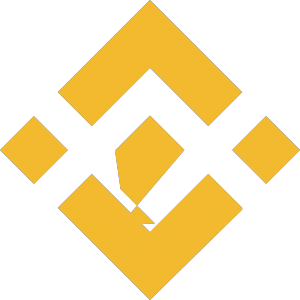
Binance Coin is the coin used to facilitate operations on the Binance platform – a cryptocurrency exchange that is capable of processing 1.4 million orders per second. The name “Binance” is derived from the combination of the terms “binary” and “finance”, referring to the integration of digital technology and finance.
The BNB coin is used on the platform to pay exchange fees, withdrawal fees, listing fees, and all other possible transaction expenses. In order to incentivize new users to do their cryptocurrency trading on Binance, the team is offering discounts when BNB is used to pay fees. The discount will be 50% in the first year, 25% in the second, 12.5% in the third, and 6.25% in the fourth year before the discount ends.
Binance was primarily marketed to Chinese cryptocurrency investors at first, but they also have English, Korean, Japanese, French, Spanish, and Russian versions of the platform.
For a deeper look into Binance, you can read the whitepaper or check out the trading platform here.
8. RChain (RHOC)

The word “ambitious” seems overused in the blockchain space these days, but it simply can’t be avoided when talking about RChain. This is made clear in the project’s detailed RChain Platform Architecture documentation, in which it is stated that its aim is “to become a blockchain solution with industrial-scale utility, RChain must provide content delivery at the scale of Facebook and support transactions at the speed of Visa.”
When it launches (expected date: Q4 2018), the RChain blockchain will be capable of processing 40,000 transactions per second. It will be a Turing-complete platform for running smart contracts written in RhoLang, a programming language that is strongly typed, concurrent, and correct-by-construction – factors which programmers can appreciate, as they indicate high efficiency and security.
RChain’s decentralized applications will run on the Rho Virtual Machine (RhoVM), which can simultaneously execute different smart contracts on independent blockchains and networks. In other words, RChain is partitioned so that it can run a network of coordinated and parallel sets of blockchains. This solution is also called “sharding,” a term that Ethereum holders will recognize as one of the most critical developments being worked on by Vitalik Buterin and the rest of the dev team for Ethereum’s scalability.
One other interesting point to note is that the RChain team is in the process of developing a “translator” protocol to enable developers across various different languages to transfer their application (code) onto the RChain blockchain with just a single press of a button. Given the headstart of other smart contract platforms like Ethereum and NEO, this feature could be critical to achieving significant adoption of RChain.
RChain is still very young and relatively unknown, but it has been growing fast since January 2018. You can learn more about the project and get involved with the RChain community by joining them on Discord.
9. Status (SNT)
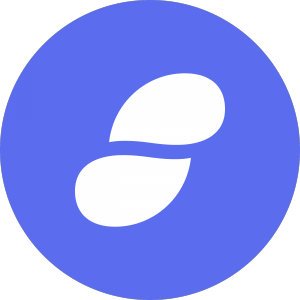
Status is one of the better-known dapps in the Ethereum community, in good part because its purpose is to actually make Ethereum better. In fact, the Status ICO was so popular that it momentarily overwhelmed the entire Ethereum network.
Status runs the go-ethereum (geth) light client on mobile devices, enabling users to turn their phones or tablets into Ethereum nodes. This allows users to participate in the mining process and make the Ethereum network stronger.
On top of that, Status is also an Ethereum browser and decentralized messaging app. This service makes it easier for people to access other Ethereum dapps and to easily communicate with people around the globe about transactions and smart contracts.
The status app is currently in alpha testing for both iOS and Android. You can learn more about Status by reading their whitepaper.
10. Maker (MKR)
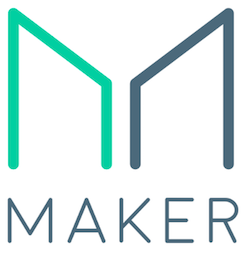
Maker is a blockchain project that serves an increasingly important purpose in the greater cryptocurrency ecosystem. Maker’s native cryptocurrency is actually a combination of two different tokens, MKR and Dai. While MKR is a utility token, Dai is what’s known as a decentralized “stablecoin” – the first of its kind. Its value is softly (impermanently) pegged to the US Dollar at a 1:1 ratio. In other words, 1 Dai is equal to $1.
Understanding how stablecoins work from a technological standpoint requires a more in-depth explanation than can be fit in this article. However, the concept is extremely interesting and worthwhile to learn about for any cryptocurrency enthusiast. You can find a more detailed explanation of stablecoins and how MKR and Dai work together in the Maker solution by reading What Is Maker? and the Dai whitepaper.
Due to their superior stability relative to other cryptocurrencies, stablecoins have greater potential for everyday use. While Bitcoin holders might be reluctant to spend Bitcoin in transactions and miss out on potential gains, stablecoin users don’t have the same concerns. Stablecoins are also a more desirable option for many traditional financial services, such as money lending, in which the lending institutions want to know that they will get a fixed return.
After years of development, the Dai token was launched in December 2017. As a decentralized alternative to the controversial and centralized USD Tether coin that is used by many exchanges in place of the USD, perhaps Dai can gain more awareness and adoption so as to become the default cryptocurrency for collateral payments.
11. DigixDAO (DGD and DGX)
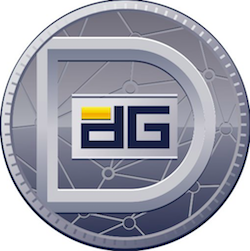
A decentralized autonomous organization (DAO) is one which is governed by rules that are written in computer code as smart contracts. DigixDAO is one such self-governing organization that was built to promote the development of world-changing decentralized projects. Community members come together to determine which projects should receive grants based on their potential to help grow the Digix network.
There are actually two tokens associated with Digix: DGD and DGX. The DGX token is backed by physical gold bullion, with 1 DGX being equal to 1 gram of physical gold that is kept in a vault in Singapore. Users can redeem the gold by mail or pick it up personally if they so choose.
The DGD token, meanwhile, is used for casting votes in the DigixDAO governance mechanism. These votes determine which projects will receive DGD funding from the community. Holders of DGD are incentivized to vote so that they can earn rewards, such as DGX discounts or rebates. With that being said, DGD tokens don’t generate any passive income or enable profiting from DGX trades or dividends.
Digix is the first project of its kind to employ a proof-of-asset protocol in order to track an asset – in this case, gold – on the blockchain. For a deeper look at DigixDAO, DGD, and DGX, we recommend reading the project’s whitepaper.
12. Aeternity (AE)
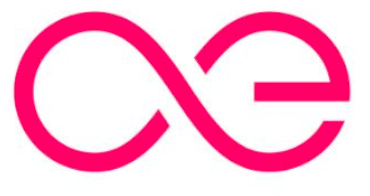
The other really significant technological component of Aeternity is its use of “smart oracles.” The idea behind smart oracles is to enable interactions between real-world data and blockchain-based smart contracts as efficiently as possible. Smart oracles enable use cases including financial applications, supply chain management, insurance, gaming, and more.
Finally, it’s worth noting that Aeternity employs a hybrid proof-of-work and proof-of-stake system. Mining consensus is reached through proof of work that can be carried out on regular computers and smartphones, making it highly decentralized. Meanwhile, the governance mechanism runs on a proof-of-stake model based on prediction markets.
For more information on Aeternity, see the project’s whitepaper.
13. Waltonchain (WTC)
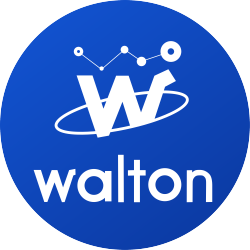
Waltonchain is one of several decentralized platforms designed for use in the Internet of Things (IoT). It employs a unique combination of blockchain technology and RFID (radio-frequency identification) to build a powerful IoT network, seamlessly connecting physical products with affordable digital tracking systems.
Waltonchain calls their solution the Value Internet of Things (VIoT). The idea is that by providing a trustless and transparent means of data sharing, a global ecosystem can be created that enables all objects and information to be interconnected. Where this technology becomes truly revolutionary is when it is used along with smart contracts.
As you likely already know, smart contracts are written in computer code and execute automatically upon completion of the contract’s conditions. However, this process isn’t quite fully autonomous, as it still requires human input to confirm that conditions have been met. With Waltonchain, the entire process can be automated so that human entry is no longer necessary. This provides superior efficiency and trustlessness, incentivizing businesses everywhere to adopt the technology as a means of mitigating risk and reducing costs.
Waltonchain potential for impact is massive, as it can be used in industries across the board. To learn about more exciting use cases as well as how the technology works, read Waltonchain: An Interconnection Between the Physical and Virtual Ecosystems and Match Made in Blockchain: Waltonchain + Request Network. And, of course, for the full picture of Waltonchain’s technological solutions, you can read their whitepaper.
14. Augur (REP)
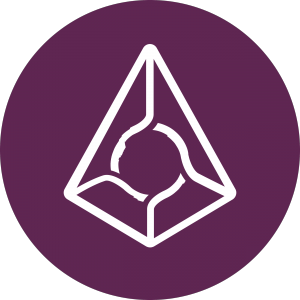
Prediction markets are already considered the most powerful forecasting tool we have in the human arsenal. The idea is that when you combine the ideas of game theory and wisdom of the crowd, you’ll generally get more accurate predictions than could be expected from even a panel of experts in any given field.
Augur is an exciting project that plans to create the first ever decentralized prediction market. Instead of having a bookie who takes bets, reports on the outcomes of events, and redistributes the funds accordingly, this can now be done in a decentralized manner.
Augur accomplishes this using Reputation, a coin which is used to incentivize holders to report honestly about the outcomes of events. When Reputation holders report honestly, they earn more Reputation. When they report dishonestly, they lose their Reputation.
Augur is currently in the beta phase, but recent development updates indicate that they’re making significant progress towards a launch. Although their USD market cap has increased to over $520 million, this may still be one of the more undervalued crypto projects out there. People love gambling, and Augur has the chance to provide a superior forecasting platform that blows their centralized competition away. If they can pull it off, it’s all up from here.
You can check out the beta platform on the Augur website and read their whitepaper to learn more about the project.
15. Veritaseum (VERI)
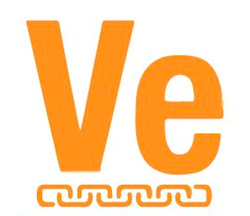
The business model of Veritaseum can be described as creating an entryway into global peer-to-peer capital markets that is cheaper than other options that are offered today. In other words, they plan to compete directly with hedge funds while operating at a fraction of the cost.
According to the Veritas Paper, Veritaseum offers access to assets and value trading without counterparty risks, credit risks, or balance sheet exposure. This is done using a software suite of roughly one dozen smart contracts called VeADIR. Customers can gain access to VeADIR using Veritas tokens, which are available on EtherDelta and a couple other lesser-known exchanges.
However, as far as investing goes, it should be mentioned that Veritaseum is one of the riskier ones out there. Their website is well below standard, and it takes a significant amount of independent research to even understand what they are trying to do.
On top of that, they haven’t officially launched any products yet, so investing at this point requires a lot of faith that they will live up to the promises they’ve made to compete against hedge funds and brokers — and win.
16. 0x (ZRX)
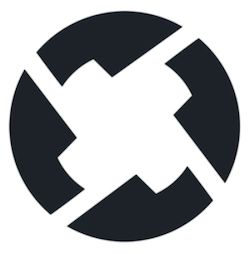
Besides scalability, one of the biggest problems with the cryptocurrency space currently is a lack of good decentralized exchanges. While some have been popping up in recent years – including Waves, IDEX, and EtherDelta – a quick look at 24-hour trade volume rankings on coinmarketcap shows that the vast majority of trading still occurs on centralized exchanges.
0x is an open-source and permissionless protocol that allows for ERC20 tokens to be traded on the Ethereum blockchain. The primary purpose of the protocol is for it to be used as a building block that enables trustless exchange functionality for decentralized exchanges and dApps.
The protocol is fast and scalable thanks to off-chain order relay, while still being trustless thanks to on-chain settlement. There are a number of “relayers” who are already using the 0x protocol to facilitate transactions, the most popular of which at the moment is Radar Relay. Many dapps have begun using the 0x protocol as well, including Augur, Aragon, and Request Network.
With the 0x protocol, users can trade directly with known counterparties for free. Meanwhile, relayers can be paid with ZRX tokens to facilitate all other transactions. As the network of dApps and relayers using 0x continues to grow, the token’s value will likely follow suit.
For additional information on how the 0x protocol and ZRX token economics work, take a look at the project’s whitepaper.
17. Revain (R)

The problem that Revain aims to solve is the lack of trustworthiness and authenticity in online product reviews. Consumers rely heavily on reviews to determine which goods and services to spend money on and which to avoid. However, it’s estimated that somewhere between 20% to 60% of all reviews are fake. On top of that, centralized review platforms like Yelp can control which reviews consumers see and even remove reviews at their own discretion.
Revain is a review platform built on the Ethereum blockchain that aims to be more trustworthy and useful than the centralized review platforms we are accustomed to. It eliminates the possibility of removing reviews retroactively, as the blockchain is immutable so all reviews posted on it are permanent.
Revain also uses a two-step process to filter reviews. Artificial intelligence filters are used to filter out spam and obviously fake reviews. Reviews that pass the first round of filters will then be sent to the company in question, and said company can either approve or reject the review. The review will be visible regardless of whether it is approved or rejected, but this gives companies a chance to leave comments explaining why they reject a given review.
Finally, Revain attempts to increase the proportion of real reviews by incentivizing review writing with RVN tokens, and at the same time capping the amount of reviews that a given user can write at 5 per day. RVN is a stablecoin (see explanation in Maker section), while the other Revain token – R – is more volatile because it is traded on exchanges.
Initially, Revain is used primarily to review cryptocurrency projects. The plan is to expand into other categories gradually in the coming years. You can learn more about the token economics of R and RVN as well as the rest of the Revain solution by reading the project whitepaper.
18. Kucoin Shares (KCS)
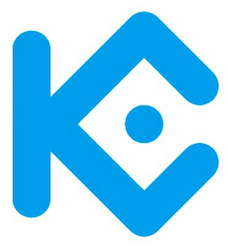
Kucoin is a Hong Kong-based cryptocurrency exchange. The platform has a native ERC20 token, Kucoin Shares, which is similar to a stock that pays dividends, but with a few other positive features on top of that.
First, the “dividends” – users of Kucoin are incentivized to hold KCS on the exchange in order to earn daily bonuses. 50% of the total transaction fees charged by Kucoin are redistributed to KCS holders according to the amount of the total supply that they own. For example, somebody who owns 1% of the total KCS on the exchange would be paid $5 for every $1,000 in transaction fees charged by the exchange.
Additionally, holding Kucoin Shares reduces the transaction fees that you pay to trade on the exchange. A fee discount ranging between 1% and 30% is assessed for every 1,000 KCS a given trader owns. For a deeper look at the Kucoin exchange platform and its incentive structure, you can read the project whitepaper. If you want to see how much passive income you could be generating by holding KCS, you can use this bonus calculator.
19. Zilliqa (ZIL)
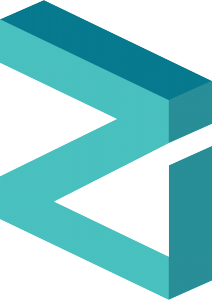
Zilliqa is a blockchain platform that can support dapps and is capable of processing thousands of transactions per second. That high transaction throughput is thanks to a scalability solution called sharding, something which the Ethereum development team is working to implement.
As the Zilliqa network expands, transaction throughput will actually increase as well, unlike typical protocols where it becomes harder to reach consensus the more nodes (miners) there are in the network.
Eventually, Zilliqa will be able to process transactions ate rates on par with Visa and MasterCard. In comparison with other blockchains with similar transaction throughput, Zilliqa is a rare case that remains completely open and permissionless rather than relying on some variation of delegated proof of stake.
One important thing to note is that Zilliqa’s programming language is data flow-based, not Turing complete. That makes Zilliqa a good choice for applications such as CryptoKitties with tons of transaction volume but relatively low complexity, whereas high complexity dapps will likely still be built on Turing complete platforms.
Other notable features of Zilliqa include a more energy-efficient mining protocol. It leverages proof-of-work for identity establishment to prevent against sybil attacks, but employs a low-footprint EC-Schnorr algorithm to achieve consensus on transaction validity.
For more information about Zilliqa, take a look at the project’s technical whitepaper or FAQ page.
20. Basic Attention Token (BAT)
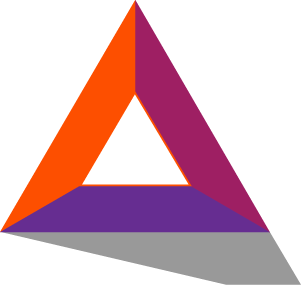
Basic Attention Token and Brave browser are solutions for the broken digital advertising model. The aim of the BAT project is to build a new system in which advertisers, content publishers, and internet users all benefit while inefficient and invasive middlemen platforms such as Facebook and YouTube eventually become obsolete.
Of course, that means that BAT is one of the most ambitious and risky projects to invest in, because supplanting those internet giants is going to be difficult, to say the least. Marketing and network effects will be critical, along with a healthy dose of patience. That being said, the BAT project certainly has the technology to turn this into a real competition.
The first component of the BAT solution is Brave browser. It’s an open-source, high-performance web browser that protects the privacy of your data while blocking ads and trackers. Brave is arguably the best browser available today regardless of its use in the new advertising model, and we highly recommend that you download it and try it out for yourself.
Another critical feature of Brave is Brave Payments, which is a program that enables users to support their favorite content creators and publishers with BAT. The list of publishers accepting BAT is growing fast as awareness of the project continues to spread. Brave tracks the time you spend on various websites and YouTube channels, allowing you to make well-informed decisions on how to distribute your BAT. Brave also enables you to earn BAT as a reward for your attention if you choose to be shown targeted advertisements while browsing.
Great post! Follow me and i will follow you. I will auto upvote anyone who is following me.
Check https://mykucoin.com for more Cryptocurrency news
great to read through these, you covered each well
You got a 1.02% upvote from @postpromoter courtesy of @cryptonewslife!
Want to promote your posts too? Check out the Steem Bot Tracker website for more info. If you would like to support the development of @postpromoter and the bot tracker please vote for @yabapmatt for witness!
Your Post Has Been Featured on @Resteemable!
Feature any Steemit post using resteemit.com!
How It Works:
1. Take Any Steemit URL
2. Erase
https://3. Type
reGet Featured Instantly � Featured Posts are voted every 2.4hrs
Join the Curation Team Here | Vote Resteemable for Witness
Very interesting post... thank you!
I am using ETH too...
...but...
Have you ever heard about the cryptocurreny BRO?
You can earn this while listening to more than 30.000 different webradio stations.
https://steemit.com/introduce/@markusmichael/open-source-blockchain-webradio-service-lets-you-earn-cryptocurrency-by-listening-bitradio-introduction